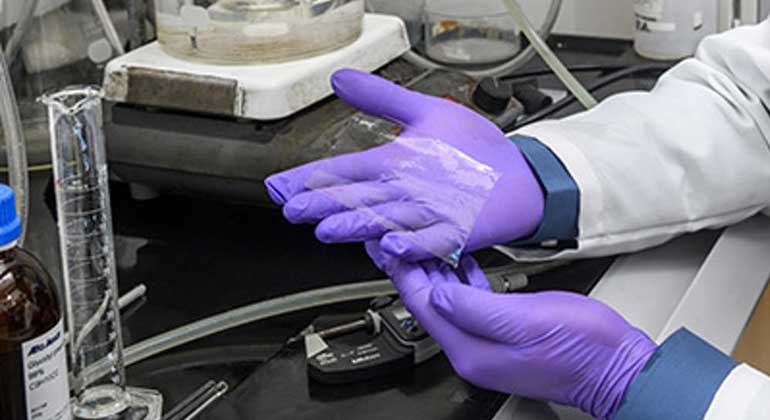Self-healing membrane extends life of hydrogen fuel cells
Researchers at the University of Delaware have developed a self-healing membrane that can extend the service life of hydrogen fuel cells.
The saying goes that time heals all wounds, but when it comes to technology, time is much better at causing those wounds. Rather than always replacing parts, fixing things or just throwing them away, researchers have developed materials that can patch themselves up as required, which could lead to self-healing electronics, paints and even spaceship hulls. Now, researchers at the University of Delaware (UD) are working on extending the life of membranes in hydrogen fuel cells by equipping them with similar self-healing powers.
In a hydrogen-powered fuel cell, a membrane usually made of a polymer called Nafion is sandwiched between the anode and the cathode. Normal use will slowly wear down the membrane, eventually leading to cracks and holes that can let the hydrogen and oxygen come into direct contact with each other and damage the whole cell.
“Membrane defects are impossible to detect and repair in an operating fuel cell,” says Suresh Advani, a researcher on the project. “The only solution currently is to replace the entire membrane electrode assembly, which is prohibitively expensive.”
To keep the fuel cells running smoother for longer, the UD team developed a membrane that would be able to make those spot repairs on its own. It works on the same principle as other self-healing polymers, concrete and paints that contain microcapsules designed to break open under stress to plug holes as they form. In this case, those tiny bubbles are full of Nafion.
“The microcapsules are designed to rupture when they encounter defects in the membrane and then release the prefilled Nafion solution to heal the defects in place,” says Liang Wang, another researcher on the study.
After more than 220 hours of durability testing, the researchers found that adding the microcapsules greatly improved the lifespan of the membrane. That should help bring down some of the barriers facing these fuel cells, including not only the service life but the overall cost of these devices.
“The possibility of employing self-healing polymeric materials that can heal cracks and pinholes in place is an exciting prospect for extending the working life and safety of such systems while also reducing the life-cycle cost,” says Advani.
Source
University of Delaware 2017 | The research was published in the Journal of the Electrochemical Society.








